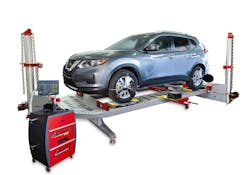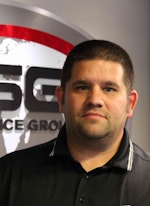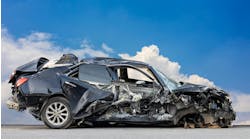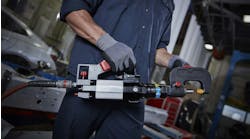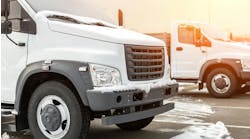While Advanced Driver Assistant Systems (ADAS) are helping keep drivers safe, they have also added a layer of complexity to the vehicle repair process. Today’s vehicles are complex computer systems that come with a million lines of code, and with the growing penetration of ADAS and other safety features, the collision repair workflow is no longer as simple as it once was.
As more technology features are integrated into vehicles, they will require precise measurement and calibration during collision repair service. While performing a vehicle scan is important in determining which repairs need to be made, ADAS calibration will be required on most vehicle repairs, as proper repair of these systems often comes down to a millimeter.
It is now more important than ever for shops to understand how ADAS is impacting the collision repair workflow and not only how repairs are made. Workflow is changing, but the importance of having the right repair equipment, the correct OEM repair procedures to follow and the proper technician training will all also play into moving collision repair forward.
ADAS won’t work if it’s not properly calibrated
ADAS systems are responsible for making sure the vehicle reacts the way the OEM intended that function to work. If not properly calibrated, they won’t work properly. It’s that simple. Let’s say a vehicle comes into the shop with a damaged windshield and is equipped with a front-facing camera. The shop replaces the windshield but an ADAS calibration isn’t performed, and the car is sent back out on the road with the vehicle’s front-facing camera off by a millimeter.
Now the driver is going down the freeway. The car’s front-facing collision camera sees an object on the side of the road, thinks it’s in front of the vehicle, and automatically brakes while doing 60 miles per hour. The outcome could be disastrous.
While ADAS technology has made the repair process more complex, understanding the basics of ADAS repair and having access to the most up-to-date OEM repair procedures are the first steps toward a new repair workflow.
Importance of ADAS training
The more the calibration process can be systemized using automated ADAS calibration systems, following the OEM repair procedures and using an OEM scan tool, the more confident a technician can be that the cars he or she puts back out on the road will be safe.
While there is no industry requirement when it comes to training in ADAS repair, the way collision shops repair vehicles must evolve. Investments need to be made in technician training, which will continue to be a challenge facing the collision repair industry. We need to educate techs on the importance of proper ADAS repair and empower them with the tools they need to do the repairs. Once the collision industry understands the impact of ADAS, techs will be in a better position to help educate their customers on why a repair is necessary and why there’s a significant cost increase in repairing the vehicle.
The collision industry is undergoing significant transformation. While ADAS systems may help collision frequency go down, the severity of collisions and the need for collision repair isn’t going away. We can evolve right along with the changing industry. We simply need to make the right investments to grow along with it.
